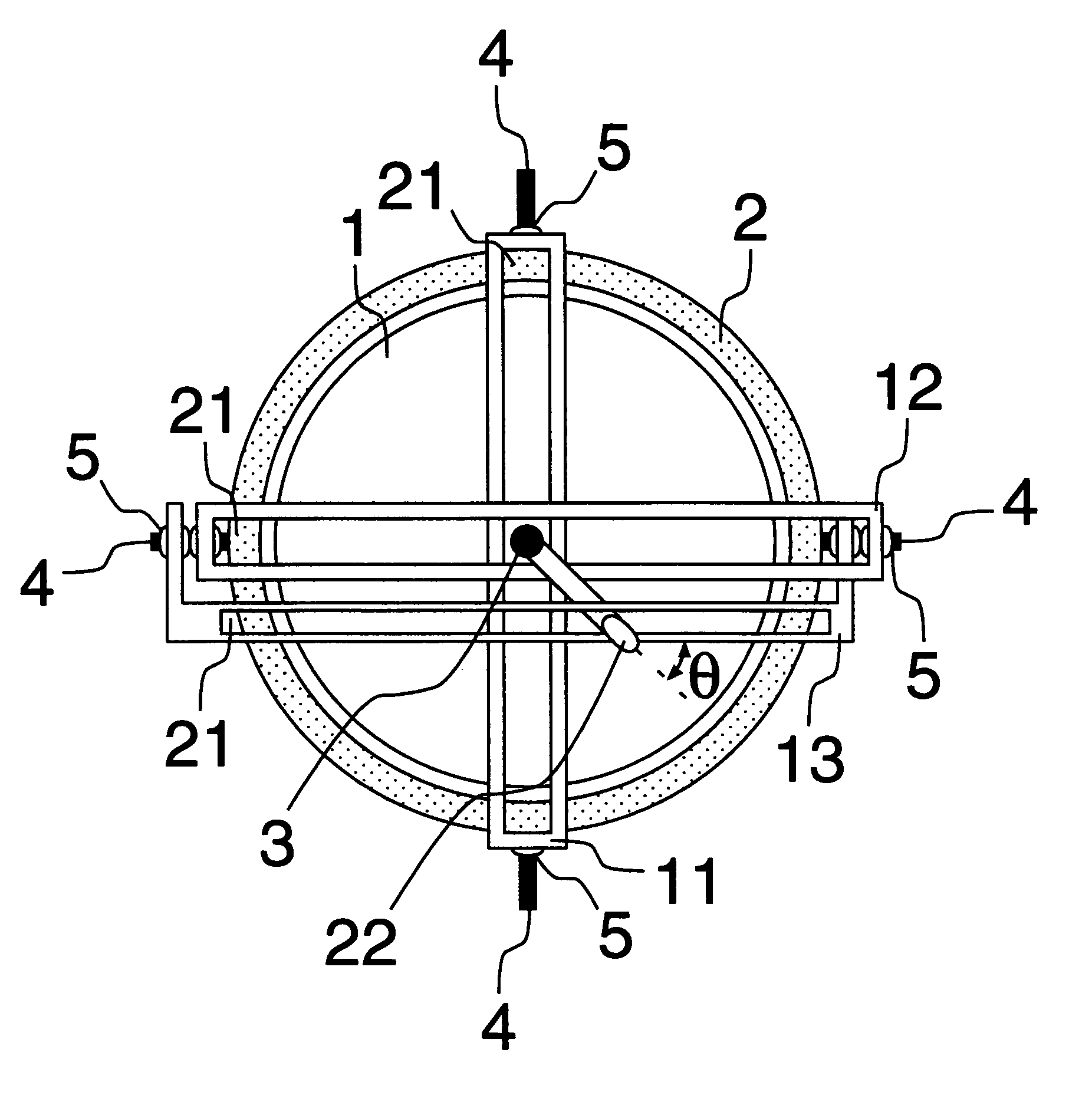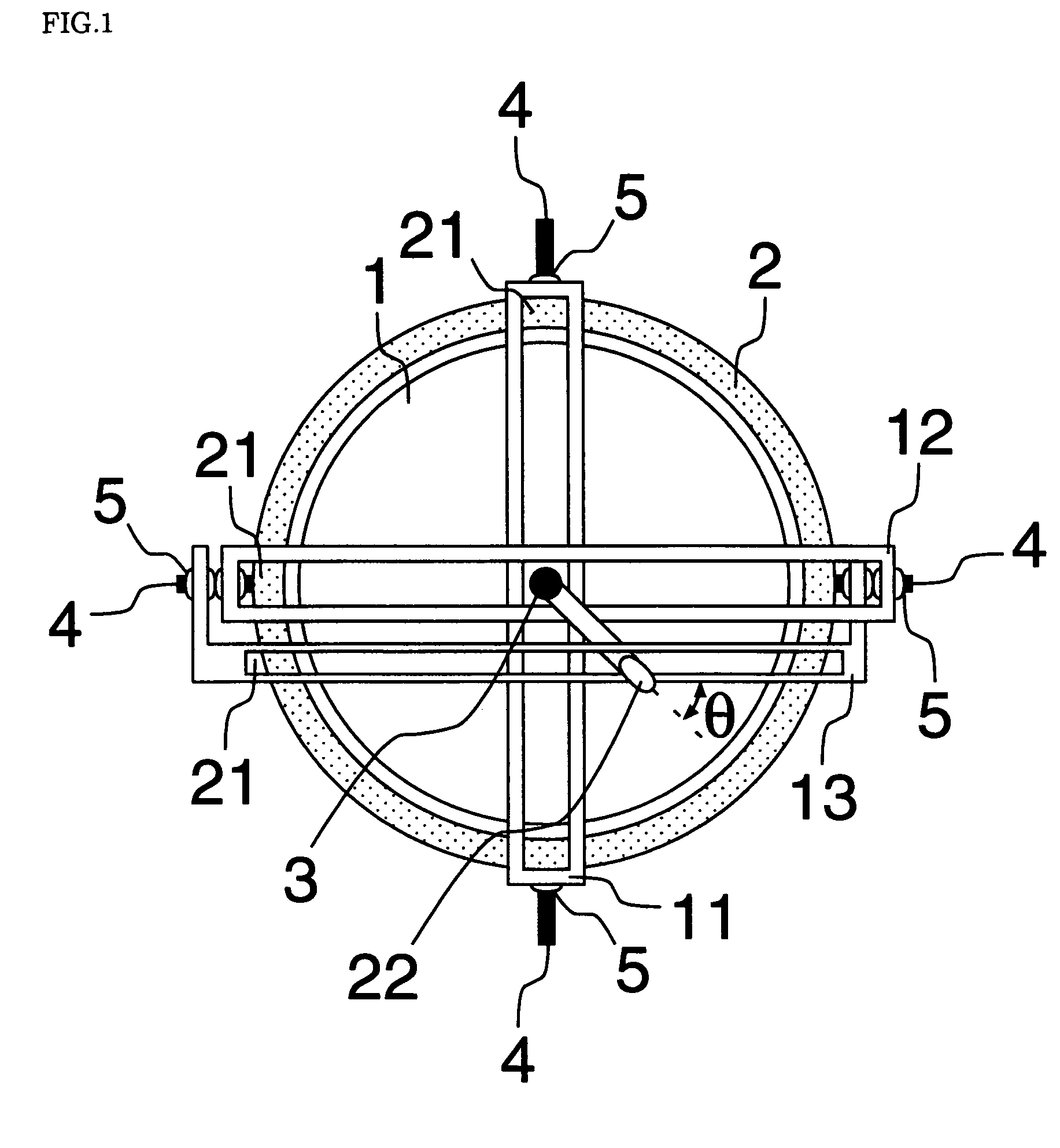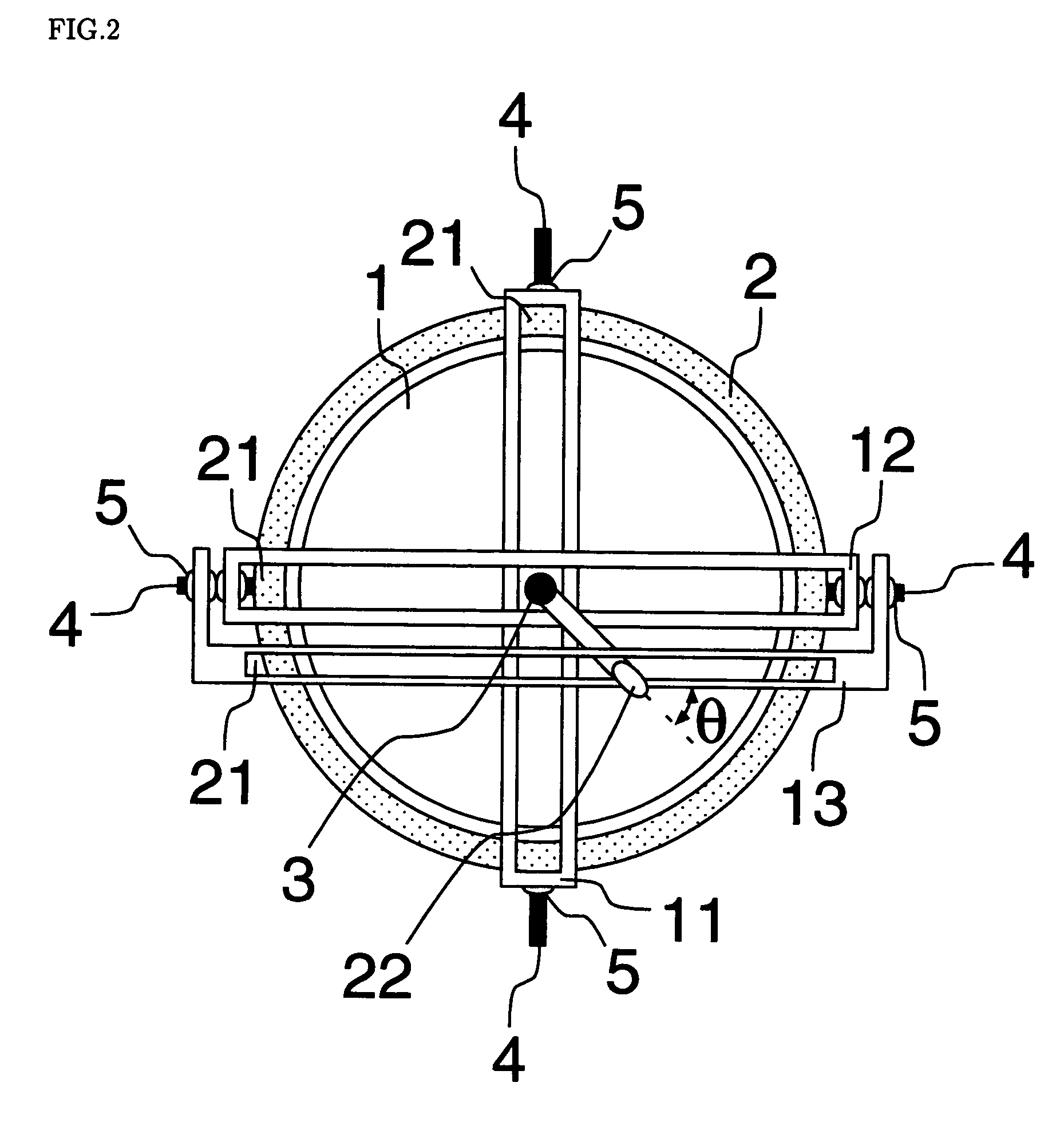Rotation system with three degrees of freedom and application of the same
a technology of rotating system and freedom, applied in the field of rotating system with three degrees of freedom, can solve the problem of hollow rotor of said system
- Summary
- Abstract
- Description
- Claims
- Application Information
AI Technical Summary
Benefits of technology
Problems solved by technology
Method used
Image
Examples
Embodiment Construction
[0071] Some enforcement forms of a rotation system with three degrees of freedom using a first guide rail 11, a second guide rail 12 and a third guide rail 13 in the present invention are shown below. With reference to the drawings, then, it is explained about the enforcement forms.
[0072] As shown in FIG. 1 and FIG. 2, basic structure of a rotation system with three degrees of freedom is spherical surface bearing structure which is combined a spherical rotor 1 and a base 2 hollowed out circularly. An indication bar 3 is installed on the rotor 1. Moreover, two shafts 4, on which a first guide rail 11 is installed, and two shafts 4, on which a second guide rail 12 and a third guide rail 13 are installed, are installed on the base 2 so as to be orthogonal each other. Suppose here that the indication bar 3 is arranged at a place where the first guide rail 11, and the second guide rail 12 and the third guide rail 13 cross. In this case, the indication bar 3 can move along these guide ra...
PUM
 Login to View More
Login to View More Abstract
Description
Claims
Application Information
 Login to View More
Login to View More - R&D
- Intellectual Property
- Life Sciences
- Materials
- Tech Scout
- Unparalleled Data Quality
- Higher Quality Content
- 60% Fewer Hallucinations
Browse by: Latest US Patents, China's latest patents, Technical Efficacy Thesaurus, Application Domain, Technology Topic, Popular Technical Reports.
© 2025 PatSnap. All rights reserved.Legal|Privacy policy|Modern Slavery Act Transparency Statement|Sitemap|About US| Contact US: help@patsnap.com



